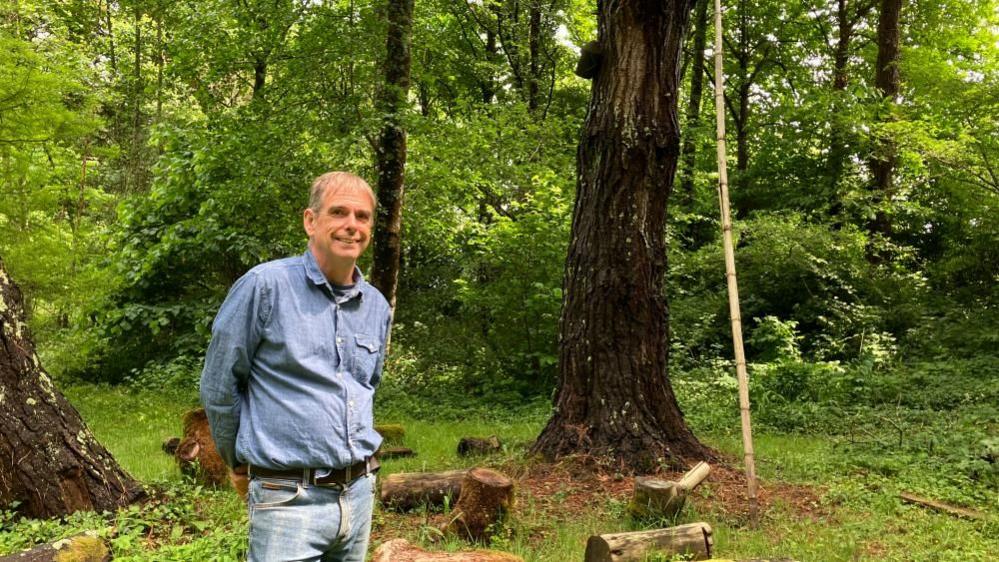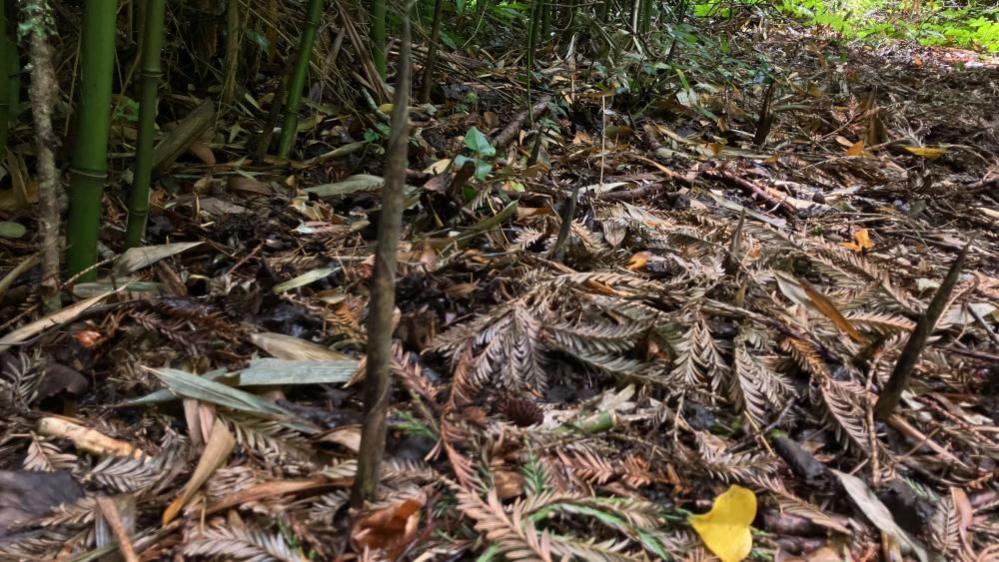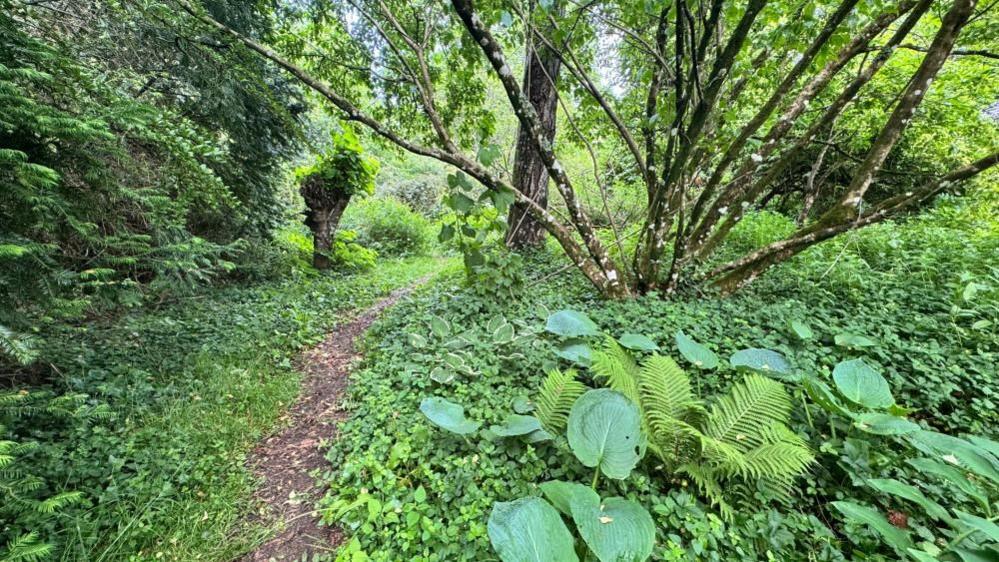Forest garden gives insight into climate change

A bumble bee at the forest garden on the Dartington Estate
- Published
The creator of a forest garden in Devon, the oldest of its kind in Europe, says it is giving insights into how wildlife adapts to climate change.
The self-seeding garden on Dartington Estate is managed by the Agroforestry Research Trust, external (ART) and contains both native and non-native plants.
Creator Martin Crawford said he had seen how the garden adapted to the changing climate over the last 30 years: "Some plants are doing much better than they did 30 years ago, things like Persimmons for example."
He said ART was in discussions with the Dartington Hall Trust (DHT) to secure the forest garden's future.

Martin Crawford, creator of the forest garden on the Dartington Estate
Mr Crawford said he began his "adventure" with the forest garden in 1994 and its success had attracted thousands of visitors from across the globe.
It includes around 140 trees which grow alongside edible crops which self-seed with minimal human intervention.
Mr Crawford described it as an orchard that was both "overplanted and underplanted". It has a canopy of trees with a ground cover of perennial plants that includes vegetables and herbs.
The garden includes common species like apples, pears and plums and less well known ones like cornelian cherries, highbush cranberries, strawberry trees and honey locusts. It includes non-native species, like bamboo, Persimmon and Japanese pepper trees.
Mr Crawford said wildlife thrived in the garden: "It's been fantastic for wildlife. There's a lot of birds. We had a bird survey and found 20 species in a week last summer. It's interesting because a lot of the plants here are not native."

Bamboo shoots along the pathway of the forest garden

Inside the forest garden on the Dartington Estate
He said it was a self-regulating system: "I've seen and realised that most plants co-operate with each other.
"We're taught that plants compete, sometimes there can be competition but more often in this kind of ecosystem plants are co-operating.
"Some plants will help feed others. They'll attract insects to eat the pests or other plants."
The future of the forest garden is uncertain. ART was given a year's notice to quit in March but its lease has been allowed to continue for a further three and a half years following a campaign and petition.

Entrance to the forest garden on the Dartington Estate
Mr Crawford said: "These long term growing sustainable growing systems can be our future.
"We face a very uncertain future with climate change and biodiversity loss. It's critically important to research these kind of systems."
A spokesman for the DHT said: "The trust has given Martin an assurance that his existing lease, which has three years to run, is safe. We have committed to discuss arrangements beyond then in due course."